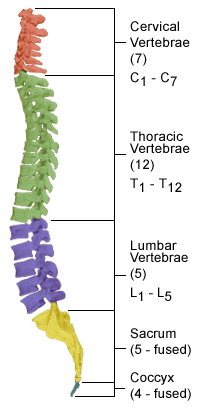Why Do We Have Spines?

Our spines have two primary purposes, which are to provide the body with structural support and to protect the spinal cord.
Providing Support
- Central Axis: The spine serves as a central axis that helps maintain our upright posture and provides stability.
- Enabling Movement: This stability allows us to stand, walk, and perform various physical activities.
Protection of the Spinal Cord
- Encasement of Spinal Cord: The spine encases the vital spinal cord of our central nervous system.
- Transmission of Signals: The spinal cord contains nerves that transmit signals between the brain and the rest of the body, enabling various sensory and motor functions.
Flexibility
- Movement between Vertebrae: The joints between individual vertebrae offer critically important flexibility.
- Range of Movements: This flexibility allows for a range of movements, including bending, twisting, and leaning, which are essential for everyday activities.
Attachment Point for Musculoskeletal Components
- Anchor for Muscles, Tendons, and Ligaments: The spine serves as an attachment point, enabling coordinated movement.
- Posture Control and Mobility: These components play a critical role in our movements, posture control, and overall mobility.
Distribution of Body Weight
- Preventing Pressure Points: The spine helps in distributing the body’s weight evenly, preventing excessive pressure on any one area.
- Balance and Injury Prevention: An even distribution of weight is crucial for maintaining balance and preventing injury.
Shock Absorption
- Intervertebral Discs Function: The spine acts as a shock absorber through the intervertebral discs located between the vertebrae.
- Reducing Impact: These discs absorb and disperse forces during activities, reducing the impact on the rest of the body.
Production of Blood Cells
- Bone Marrow Function: Within the cavities of certain vertebrae, bone marrow produces essential red and white blood cells.
- Oxygen Transport and Immune Function: These blood cells are crucial for oxygen transport and immune function.
Importance of Spine Health
- Basic Approaches: Practicing good spine health includes not smoking, maintaining a healthy weight, and staying active.
- Addressing Pain and Discomfort: Persistent neck and back pain should be addressed with effective strategies and medical counsel if necessary.
Conclusion
A healthy spine is key to healthy living. It is essential not to ignore the signs of pain and discomfort and to seek professional advice when needed. Highly trained experts are available to provide help and support.
If you consider all these roles the spine plays, it’s clear why we should be practicing good spine health, including taking such basic approaches as not smoking, maintaining a healthy weight, and staying active.
Also, keep in mind that if you experience persistent neck and back pain, there are strategies that have been shown to make a difference. Conversely, you should be aware that it’s not often that the pain goes away on its own.
So, take action. The right action. And, if you don’t find a solution that works, seek out the counsel of a medical professional. A healthy spine is key to healthy living. Don’t ignore what the pain and discomfort are trying to tell you, and be aware that there are highly trained experts ready to help.
